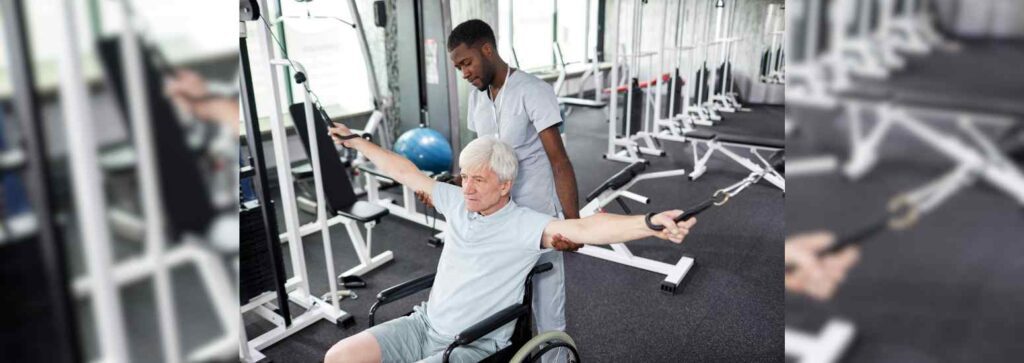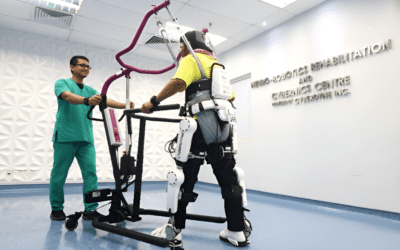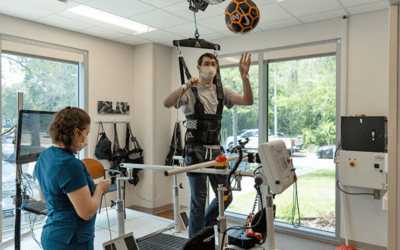Traumatic Brain Injury (TBI) can lead to a range of effects, including cognitive deficits, physical impairments, and emotional disturbances, significantly impacting daily functioning. Rehabilitation devices such as mental training tools, robotic exoskeletons, and virtual reality systems can aid in recovery by enhancing cognitive abilities, improving mobility, and providing immersive therapeutic experiences.
These technologies facilitate personalized rehabilitation, allowing for targeted interventions based on individual needs. Ultimately, their application can improve the quality of life and promote greater independence for individuals recovering from TBI.

Types of Traumatic Brain Injury and Their Impact
Traumatic Brain Injury (TBI) is a disruption in normal brain function caused by an external force, often resulting from a blow or jolt to the head. TBIs can range from mild concussions to severe brain damage and can lead to a variety of physical, cognitive, and emotional symptoms.
Concussion
A mild form of Traumatic Brain Injury resulting from a sudden impact or jolt to the head. Symptoms may include headache, confusion, dizziness, and memory problems. Most concussions resolve within days to weeks.
Contusion
A bruise on the brain, typically resulting from a direct impact. Contusions can cause swelling and may lead to more serious complications, depending on their location and severity.
Diffuse Axonal Injury
Occurs when the brain rapidly shifts inside the skull, causing widespread damage to the axons (nerve fibers). This type of injury often results from rotational forces and can lead to prolonged unconsciousness or a coma.
Penetrating Traumatic Brain Injury
Involves an object penetrating the skull and entering the brain tissue, often causing significant damage. This type of injury can occur from gunshot wounds, stab wounds, or sharp objects.
Blast Injury
Resulting from explosions, this type of Traumatic Brain Injury can cause both primary injuries (due to the blast wave) and secondary injuries (from debris). Blast injuries are common in military personnel and can lead to complex neurological issues.
Secondary Injury
Refers to the cascade of physiological events after the initial injury, such as swelling, increased intracranial pressure, and reduced blood flow to the brain. Secondary injuries can worsen the outcomes of the primary Traumatic Brain Injury.
- Closed Brain Injury:
A closed brain injury occurs when an external force impacts the head without breaking the skull. This type of injury typically involves the brain being jolted or shaken within the skull.
Impact of Traumatic Brain Injury on Lives:
Traumatic Brain Injury (TBI) can profoundly impact various aspects of an individual’s life, including:
Cognitive Function: Traumatic Brain Injury
can lead to difficulties with memory, attention, problem-solving, and executive functions, affecting daily decision-making and overall quality of life.
Emotional and Behavioral Changes
Individuals may experience mood swings, depression, anxiety, or irritability, which can strain relationships and hinder social interactions.
Physical Limitations
Traumatic Brain Injury Motor impairments, balance issues, and fatigue may result from Traumatic Brain Injury, limiting participation in physical activities and impacting independence.
Social and Occupational Challenges
The combination of cognitive, emotional, and physical changes can affect an individual’s ability to work, engage in social activities, or manage everyday tasks, leading to isolation and reduced self-esteem.
Financial Impact: Traumatic Brain Injury (TBI)
Traumatic Brain Injury (TBI) often results in increased medical expenses, potential loss of income, and long-term care needs, creating financial strain for individuals and their families.
Overall, the multifaceted effects of TBI can significantly alter a person’s life, requiring comprehensive rehabilitation and support to navigate the challenges and enhance recovery.
The Vital Role of Rehabilitation Devices in Recovery
Rehabilitation devices play a crucial role in the recovery process for individuals with Traumatic Brain Injury (TBI) by facilitating physical, cognitive, and emotional rehabilitation.

Here are some key aspects of their impact:
Cognitive Rehabilitation Tools
Devices such as tablets and software applications designed for cognitive training can help improve memory, attention, and problem-solving skills, enabling individuals to regain functional independence.
Robotic Exoskeletons:
These assistive devices aid mobility by supporting movement and balance, allowing individuals to relearn walking and improve overall physical function, which is critical for reintegration into daily life.
Virtual Reality Therapy: Immersive Healing for Traumatic Brain Injury
VR systems provide immersive therapeutic environments for cognitive and physical rehabilitation, helping patients practice real-life scenarios safely while enhancing engagement and motivation.
Biofeedback Devices:
These monitor physiological responses and provide real-time data to help individuals learn to control specific functions, aiding in stress management and emotional regulation.
By incorporating these rehabilitation devices into therapy, healthcare providers can create personalized treatment plans that enhance recovery, promote independence, and improve the overall quality of life for Traumatic Brain Injury (TBI) patients.
Conclusion
Traumatic Brain Injury (TBI) can lead to significant cognitive, emotional, and physical challenges, profoundly impacting an individual’s daily life. Rehabilitation devices play a vital role in facilitating recovery, enhancing independence, and improving the overall quality of life for those affected by TBI.



